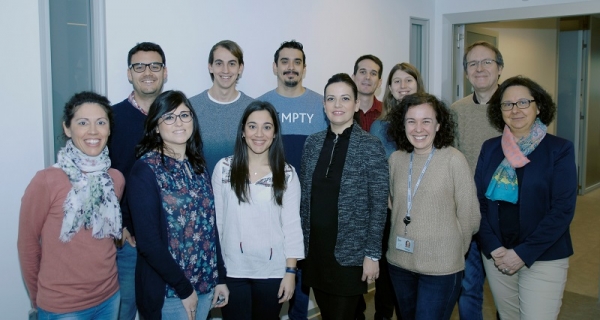Although all cells in an organism have the same genetic information, not all perform the same function, being as not all of them have the same active genes. Part of these differences in gene activity is due to DNA methylation, a process of silencing that labels genes in order to keep them “off” when they are not necessary. These labels are key epigenetic marks for the organism and are related to diseases such as cancer, since when they are uncontrolled, they can end up silencing important genes for normal cell activity.
A research team at the University of Cordoba established just that: a new way to reactivate silenced genes and has developed a tool that allows for advancing in epigenome editing. The epigenome is the name for the set of epigenetic marks that regulates gene expression and acts as an on/off switch for genes.
The research, carried out by the Epigenetics and DNA Repair research group, led by Genetics Professor María Teresa Roldán Arjona, focused on 5-methylcytosine, the methylated DNA form that causes gene silencing. “Our aim was to design a system that eliminates this methylcytosine from specific places in the genome and susbstitutes it for unmethylated cytosine, so as to once again turn on those silenced genes”, points out Genetics Professor Rafael Rodríguez Ariza, member of the research team.
Specifically, the study used the tool known as CRISPR, a genetic editing technique that uses RNA guides to direct a protein (Cas9) to specific places on DNA and stop it. “In this case, an inactive version of the Cas9 protein was used, given that our aim was not to eliminate a DNA sequence, but rather to remove some of the labels responsible for gene silencing”, says the researcher.
To do so, the research project used a plant enzyme called ROS1 that erases these molecular labels. This is a protein that is only present in plants and that releases DNA from these marks directly, something that differentiates it from animal proteins that only work indirectly and in a more complex way. The strategy consists of inserting ROS1 into in-vitro cells, along with RNA and inactive Cas9 protein, to guide it to the gene that is to be reactivated.
The new tool, along with other previously existing ones, is another step further in epigenetic editing and in understanding DNA methylation, the action that translates into silencing genes and is linked to important pathological processes.
References:
Devesa-Guerra, Iván & Morales-Ruiz, Teresa & Pérez-Roldán, Juan & Parrilla, Jara & Dorado-León, Macarena & García-Ortiz, María & Ariza, Rafael & Roldan Arjona, Teresa. (2020). DNA methylation editing by CRISPR-guided excision of 5-methylcytosine. Journal of Molecular Biology. 10.1016/j.jmb.2020.02.007.


